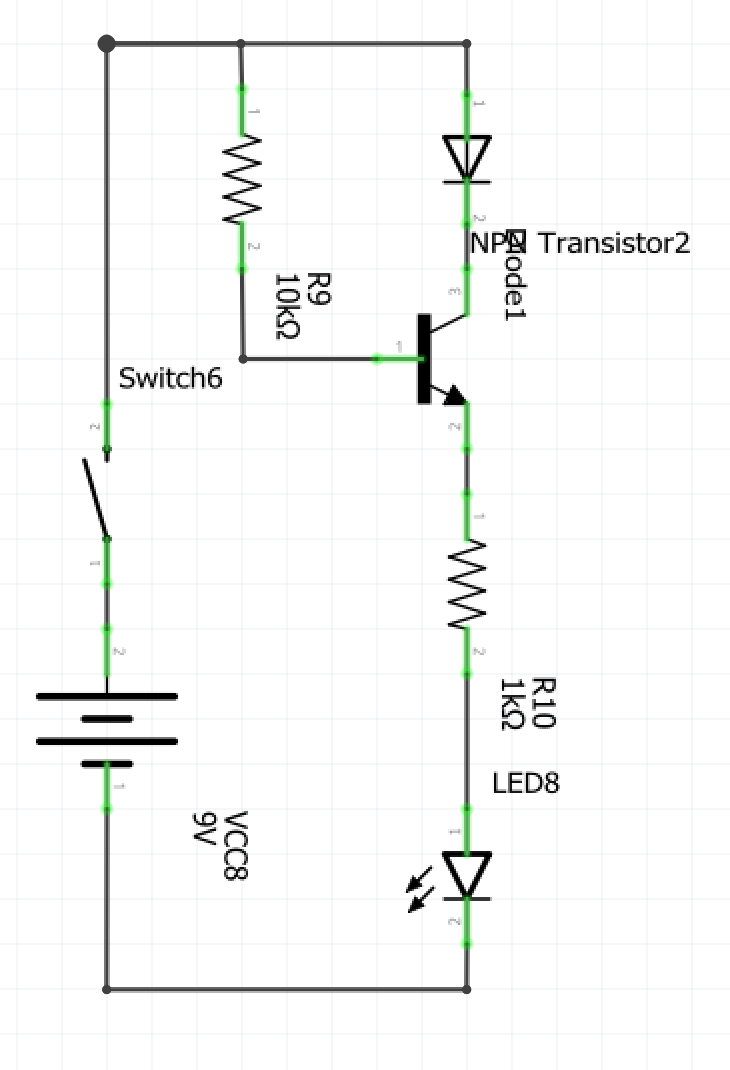Looking at Electrical Applications we will focus on various aspects to learn.
This one covers the transistor. In its simplest form, a transistor acts like a switch. Electricity will flow through the transistor when the switch is turned on (there is a twist we will cover later).
Make has an excellent video series on YouTube. This one covers the transistor.
Now that you have an understanding of what the transistor is (hopefully), we will build a small circuit to test this out.
The circuit will turn on an LED when the transistor is switched on.
We will use an NPN transistor and apply the current to the base, this will turn on the LED.
To make this work, we need build the circuit. We will use a 9v battery, two resistors, an LED, a switch and a transistor.
The battery V1 provides 9v, this powers the circuit.
Resistor R1 is used to limit the current to the LED, this is to prevent the LED from burning out.
D1 is the LED, this is the light.
Q1 is the transistor.
Resistor R2 is used to limit the current to the transistor. Only a small current is needed to turn the transistor on.
The switch SW1 is our manual control for the light. Turning it on, allows current to flow through Resistor R2 and turn on the transistor.

Reference: https://electronics.stackexchange.com/questions/70477/single-led-single-transistor-circuit-not-working
Build the circuit using the materials provided.
Does it work?

